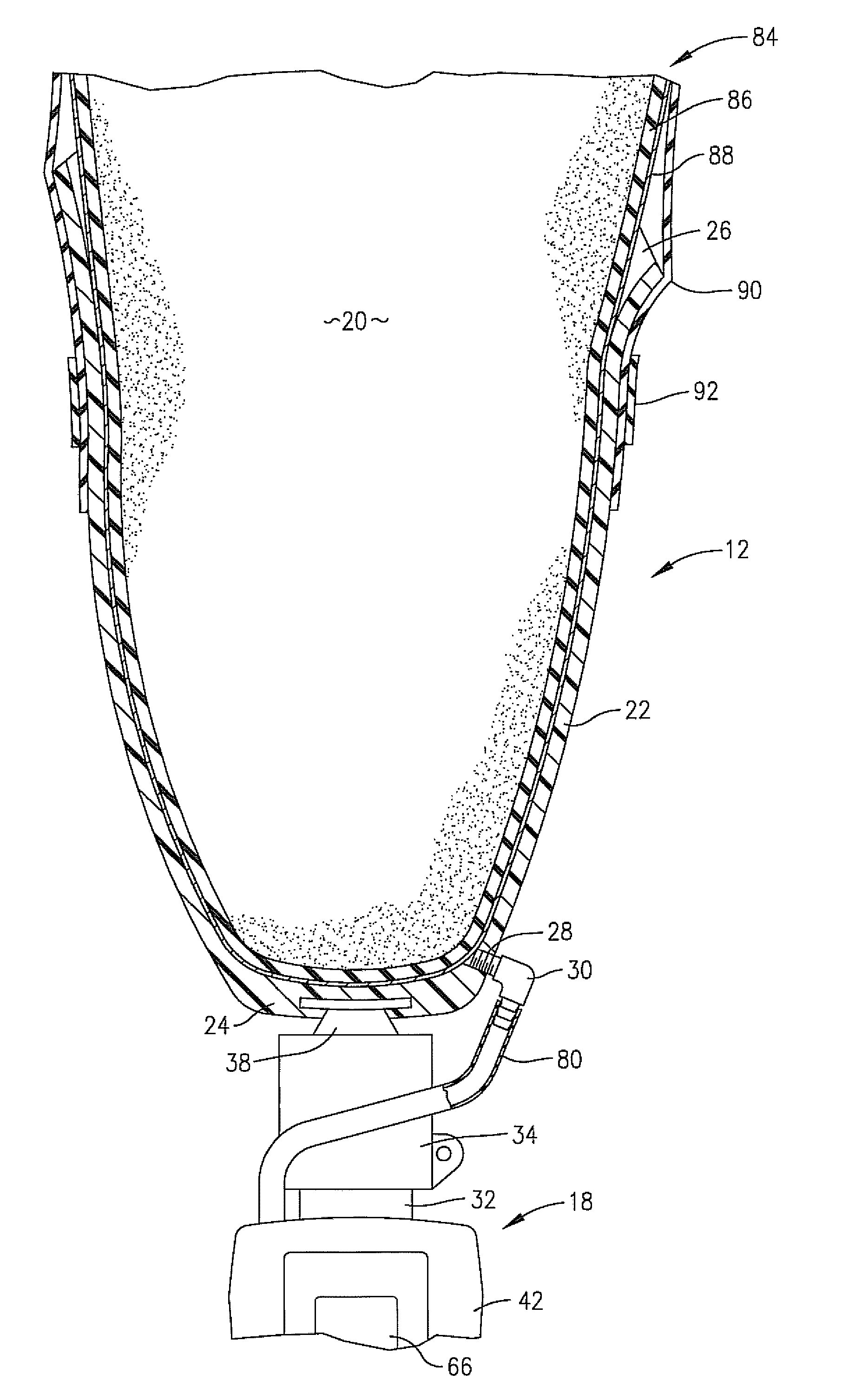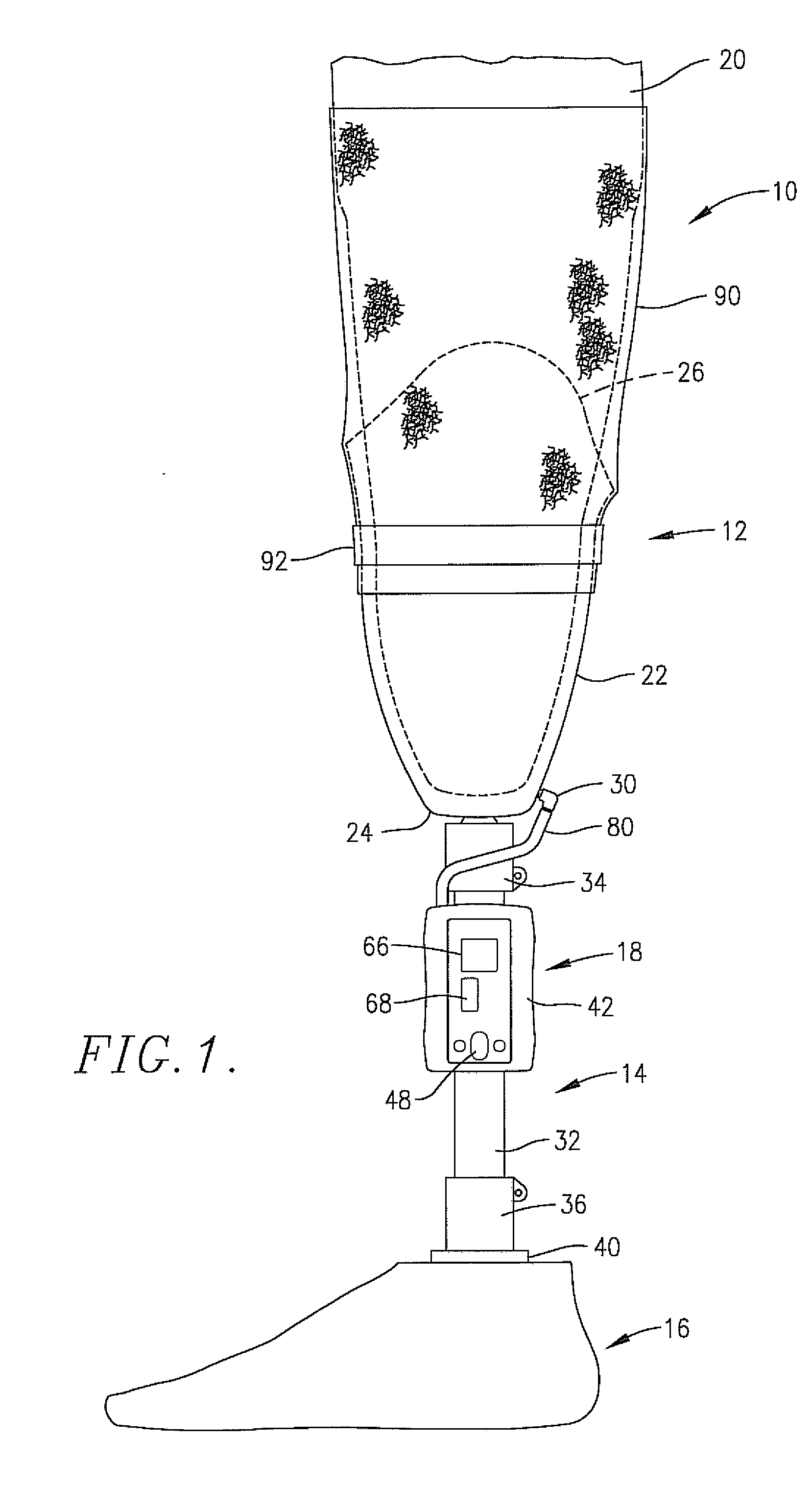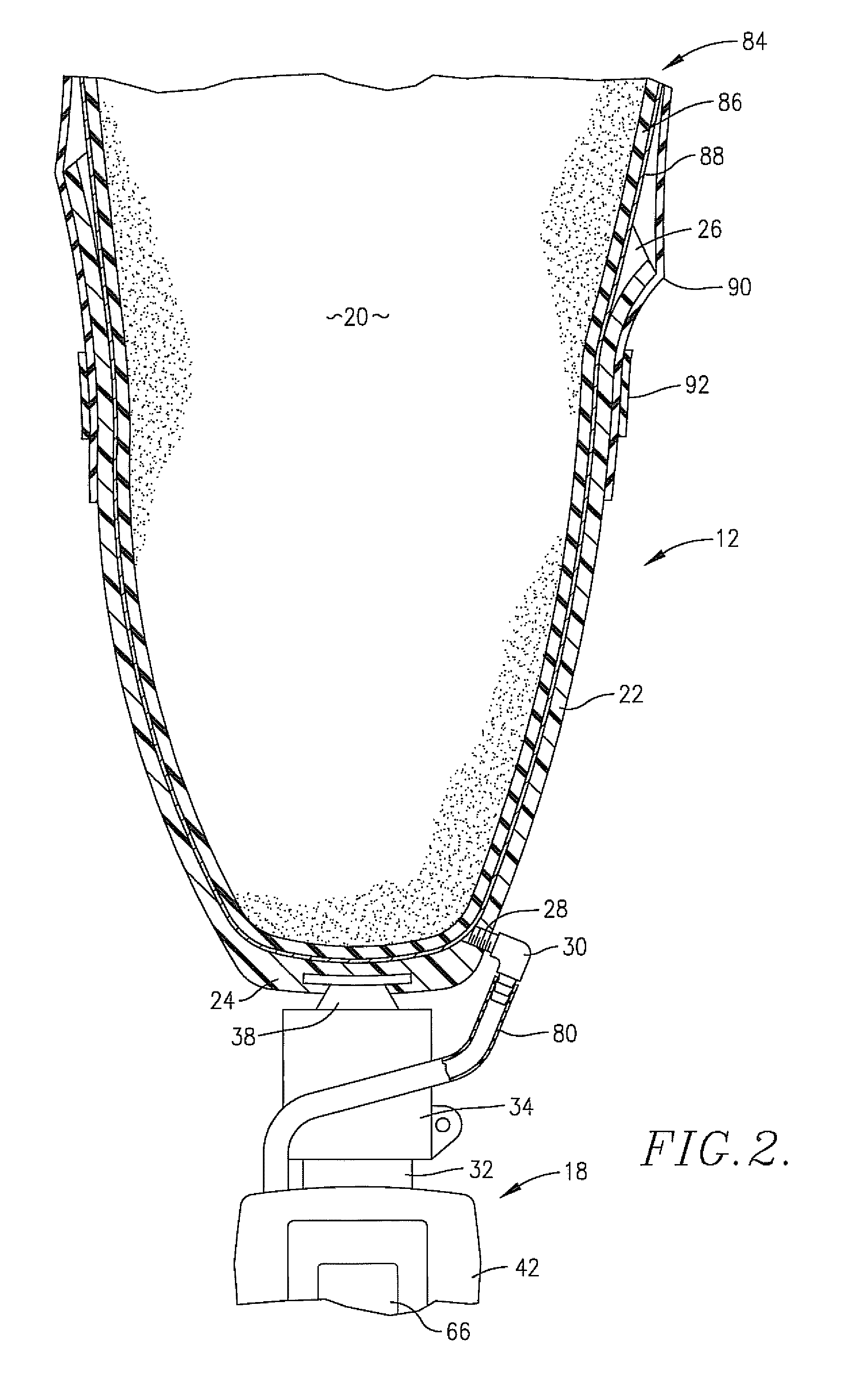Artificial limb assembly having microprocessor-controlled vacuum pump
a technology of microprocessor control and vacuum pump, which is applied in the field of artificial limbs with microprocessor controlled vacuum pump, can solve the problems of user experience, no vacuum can be generated, and individual problems of the limb, so as to reduce the number of pump cycles and good sealing
- Summary
- Abstract
- Description
- Claims
- Application Information
AI Technical Summary
Benefits of technology
Problems solved by technology
Method used
Image
Examples
Embodiment Construction
Embodiment of FIGS. 1-3
[0026] Turning now to the drawings, an artificial limb assembly 10 is depicted in FIG. 1 and broadly includes a socket assembly 12, a pylon 14, a prosthetic foot 16, and a vacuum pump and control assembly 18. The limb assembly 10 is adapted to be coupled with a residual limb 20, in this case, the residuum of a below-the-knee amputation. It will be appreciated, however, that the invention is not limited to this specific type of artificial limb assembly, but can be used for other varieties, e.g., above-tie-knee amputations or for artificial arm assemblies.
[0027] The socket assembly 12 is best illustrated in FIG. 2, where it will be seen that it includes an upright, open-top relatively rigid socket 22 presenting a lower closed-end 24 and an upper margin 26. It will also be seen that the socket 12 includes a threaded bore 28 receiving a threaded pneumatic nipple 30, which is important for purposes to be described. Generally, the socket 22 would be custom-prepared...
PUM
 Login to View More
Login to View More Abstract
Description
Claims
Application Information
 Login to View More
Login to View More - R&D
- Intellectual Property
- Life Sciences
- Materials
- Tech Scout
- Unparalleled Data Quality
- Higher Quality Content
- 60% Fewer Hallucinations
Browse by: Latest US Patents, China's latest patents, Technical Efficacy Thesaurus, Application Domain, Technology Topic, Popular Technical Reports.
© 2025 PatSnap. All rights reserved.Legal|Privacy policy|Modern Slavery Act Transparency Statement|Sitemap|About US| Contact US: help@patsnap.com



